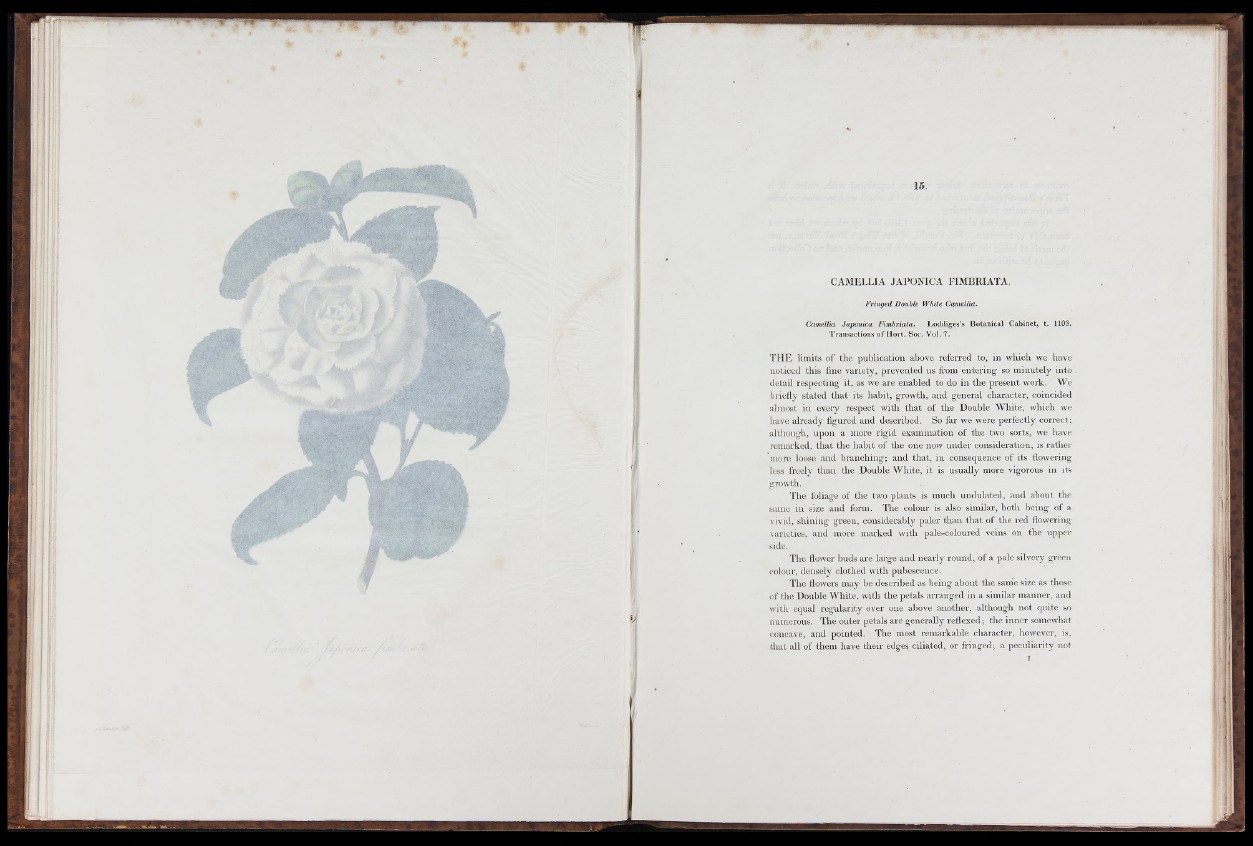
■ - ^ ‘?A-:' ■•••A'' -- ^ib- '.'' •■ .>
' . • •••:* M ■ ■'.-A.'kd-' ':': ■ • "i
15.
CAMELLIA JAPONICA FIMBRIATA.
F r in g e d D ouble W h ite Camellia.
Camellia Japónica F im b r ia ta . L o d d ig e s ’s B o ta n ic a l C ab in e t, t . IIOS.
T ra n s a c tio n s o f H o r t. Soc. V o l. 7.
TH E limits of the publication above referred to, in which we have
noticed this fine variety, prevented us from entering so minutely into
detail respecting it, as we are enabled to do in tlie present work. We
briefly stated th a t its habit, growth, and general character, coincided
almost in every respect with th a t of the Double White, which we
have already figured and described. So far we were perfectly correct;
although, upon a more rigid examination of the two sorts, we have
remarked, th a t the habit of the one now under consideration, is rather
more loose and branching; and tha t, in consequence of its flowering
less freely than the Double White, it is usually more vigorous in its
growth.
The foliage of the two plants is much undulated, and about the
same in size and form. The colour is also similar, both being of a
vivid, shining green, considerably paler than th a t of the red flowering
varieties, and more marked with pale-coloured veins on the upper
side.
The flower buds are large and nearly round, of a pale silvery green
colour, densely clothed with pubescence.
The flowers may be described as being about tlie sanie size as those
of the Double White, with the petals arranged in a similar manner, and
with equal regularity over one above another, although not quite so
numerous. The outer petals are generally reflexed; the inner somewhat
concave, and pointed. The most remarkable character, however, is,
th a t all of them have their edges, ciliated, or fringed; a peculiarity not